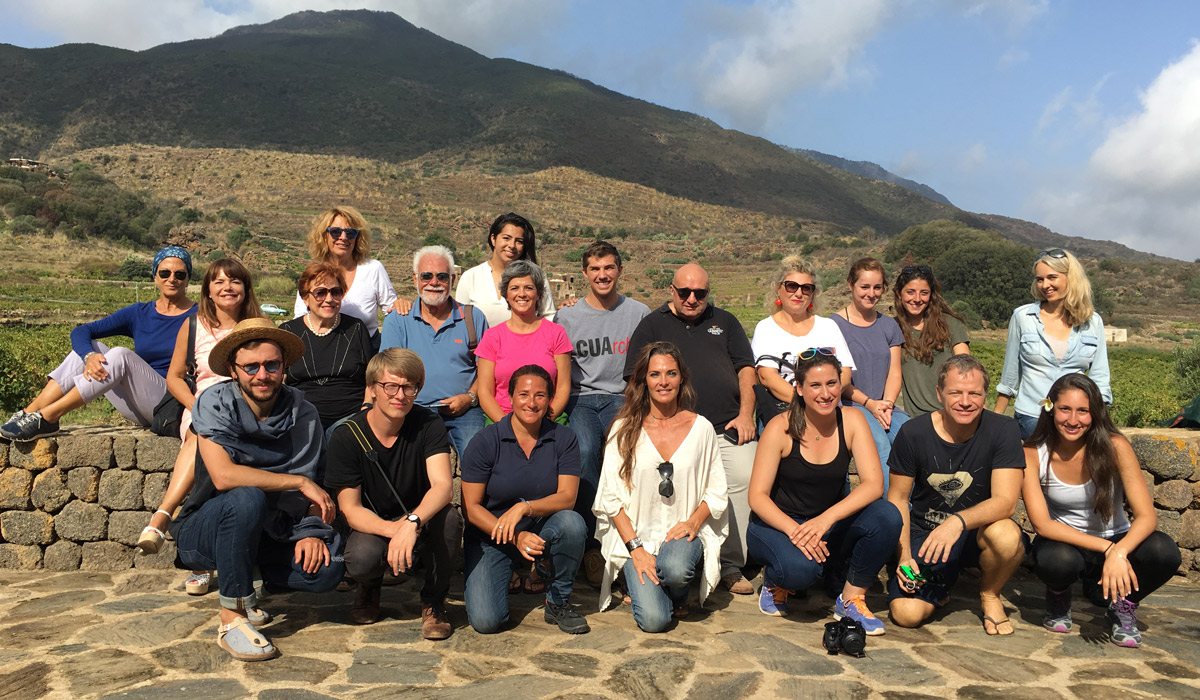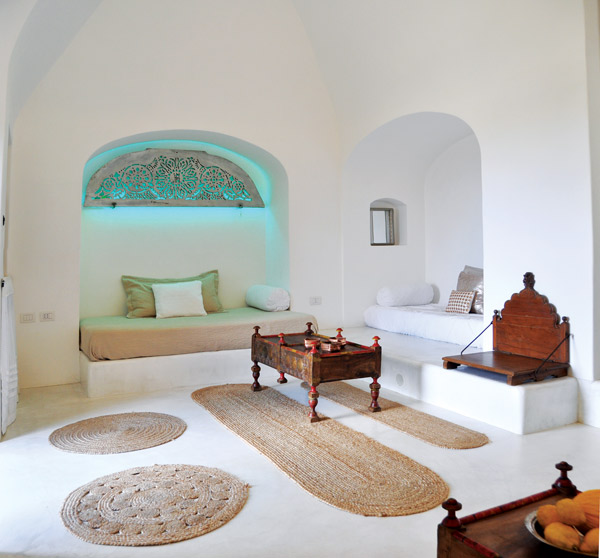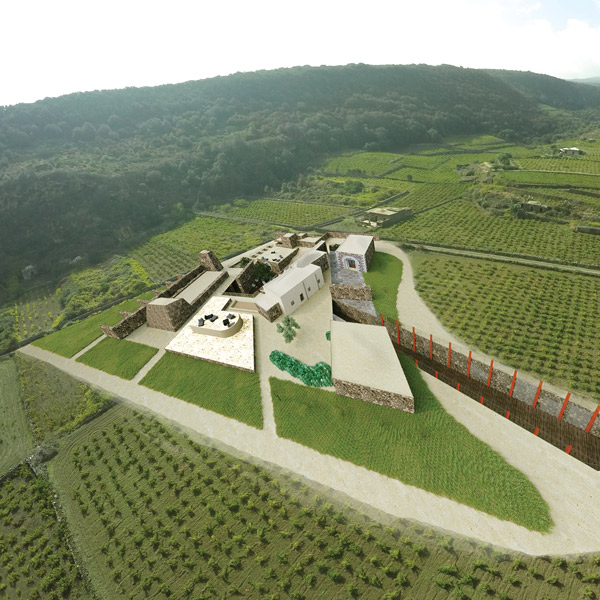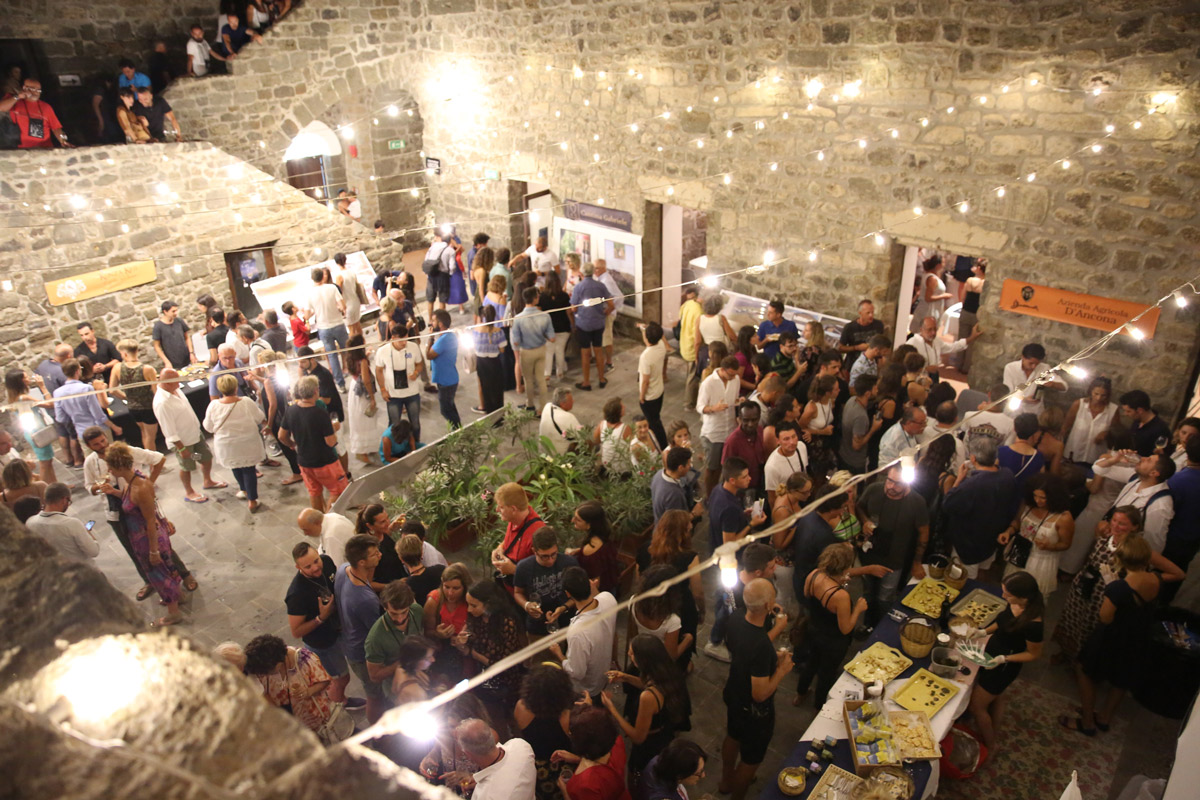

Lavinia Fici Pasquina, associate professor of architecture and planning, first set foot on the small Italian island of Pantelleria as a teenager, nearly 30 years ago, when she took a ferry from her hometown of Palermo, Sicily. “I felt a magnet pull my feet to the ground,” she recalls. “Never before had I felt an energy like that. Stars above like nothing you’ve ever seen.”
Formed by volcanic rock, the small Italian island of Pantelleria sits between Sicily and Tunisia. On a clear day, the coast of Africa is visible from the island’s vineyards and rocky hills. The landscape is shaped by rows of low-lying vines, sheltered from the harsh Sahara wind, that produce the Zibibbo grapes for the island’s signature dessert wine Passito di Pantelleria.

More than 15 years ago, Fici Pasquina realized a dream when she bought a dilapidated dammuso (simple stone house) on the island.
It took years for her to transform the tiny dwelling into the peaceful retreat it is today.
“The shoes go away, the schedule goes away, and worries go away,” says Fici Pasquina about the time she spends on the island. What does not go away, however, is the architecture professor’s imagining of new opportunities for her students.
In 2014, she seized an opportunity when UNESCO (United Nations Educational, Scientific, and Cultural Organization) put Pantelleria on its Representative List of the Intangible Cultural Heritage of Humanity in recognition of the island’s “heroic” agriculture — the growing of grapes in the harshest of climate conditions. It was the first time the international body bestowed the designation on an agricultural practice.
The UNESCO designation brings increased knowledge of the island. Fici Pasquina, who is head of the University’s Technology and Media in Architecture and Interiors Program (TMAIn) and leads the Foreign Studies Program, began to share ideas with local officials and wine makers. She proposed projects that would be designed by students in the School of Architecture and Planning with opportunities to travel to the island.
Practical application of skills is a hallmark of Catholic University’s School of Architecture and Planning. In their studio classes, students often design projects that address real-world needs, both in Washington, D.C., and around the world.
The Pantelleria projects began in the fall of 2016 with a European trip that included stops at the University’s Rome Center, Sicily, and Pantelleria. In the spring 2017 semester, students in a TMAIn elective course, Advanced Digital Design and Fabrication, began work as a group designing a UNESCO pavilion, a visitors’ center for the island. Students in the TMAIn Architectural Studio worked on individual projects, each designing a wine museum as part of a competition with scholarship awards for the top three students provided by the government of Pantelleria. Local officials and wine makers selected the winning designs.

Dung Hoang, a master’s student, was awarded first place for his design, inspired by the Giardino Pantesco, gardens embraced by stone walls offering protection from the elements. “Museums are not just a place to showcase artifacts,” he says. “But they are a place for community building. The museum itself should be an exhibition item.”
“The students in both studios immersed themselves in learning everything about the island,” says Fici Pasquna, “including the mythology, the history, the way of life, the celebrations, the composition of the soil, and the method of growing the grapes and making the wine.”
Dylan Gallagher, who was awarded second place for his museum design, made the fall trip to Pantelleria. “We got to know the people,” he says. “They shared their love of the island with us. They want to show their culture to the world, and we felt a responsibility to help them do that.”
In June 2017, Fici Pasquina was back on Pantelleria with four of her students and Judith Meany, an associate dean for academic affairs. They brought with them 10 displays of student-designed museums and the design for the pavilion. The exhibit of these displays, hosted by the wine house of Donnafugata, was called “Winergy,” blending the words wine, energy, and synergy. The winery’s stone-walled courtyard was filled with the people of Pantelleria, who came to celebrate the American students’ proposals.
“For me it was a day of love,” says Fici Pasquina. “To share my love of Pantelleria with my students, and to see them receive the love of the people who call the island home was my dream.”

(This article was adapted from a feature story that appears in the summer 2018 edition of CatholicU Magazine.)